Is It A Bee, Wasp, Yellowjacket, Or Hornet?
Minnesota is home to several stinging insects, and the most commonly found ones are bees, wasps, yellowjackets, and hornets. While all can sting, they vary in their threat and treatment. However, when it’s dive-bombing your picnic plate, you just want it gone.
Our experts have put together a simple table to help you learn the key differences between these commonly found stingers!
Bee

Appearance
- Darker golden yellow than wasps
- Fatter, rounder bodies
- Visibly furry or hairy
- Alternating black & light brown bands on body
What they eat
Pollen and nectar from flowers
Temperament
Not aggressive
Benefit
Pollinate food crops
Nests
Made of wax, not paper
Stings
Have barbed stingers
Remove by scraping with a credit card or fingernail—squeezing will drive more venom into your body
Wasp
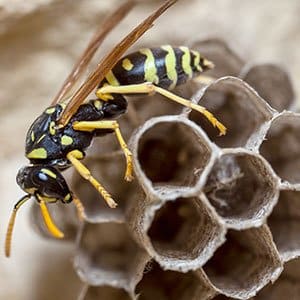
Appearance
- Yellow and black or mostly black
- Long, slender body with dangling legs
- Shiny; no visible hair
What they eat
Sugary food and drinks such as fruit, garbage, meat, and other human food
Temperament
Aggressive
Benefit
Prey on pest insects
Nests
Build small papery nests under eaves, roof overhangs, or tree limbs
May build nests inside an opening such as between roof beams or walls of a house
Stings
Will sting multiple times
Yellowjacket
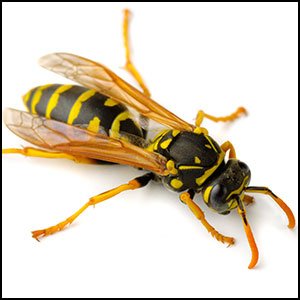
Appearance
- Brighter yellow than bees
- Long, slender body, shorter than wasps
- Shiny; little to no fur
What they eat
Sugary food and drinks such as fruit, garbage, meat, and other human food
Temperament
Yellowjackets are particularly aggressive in late summer and fall
Benefit
Prey on pest insects
Nests
Build small papery nests under eaves, roof overhangs, or tree limbs
May build nests inside an opening such as between roof beams or walls of a house
Stings
Will sting multiple times
Hornet
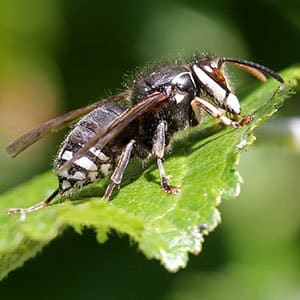
Appearance
- True hornets are not found in Minnesota
- Bald-faced hornets are a type of yellow jacket with cream and white coloring
What they eat
Sugary food and drinks such as fruit, garbage, meat, and other human food
Temperament
Aggressive
Benefit
Prey on pest insects
Nests
Build small papery nests under eaves, roof overhangs, or tree limbs
May build nests inside an opening such as between roof beams or walls of a house
Stings
Will sting multiple times
Seven expert tips for stinging insects in Minnesota:
- Local beekeepers can help relocate honeybee colonies.
- Bees are round and furry. Wasps and yellowjackets are long, slender and shiny.
- If you see wasps or yellow jackets entering a small hole in the side of your home, it’s a sign that there is a nest that will need to be treated.
- Never seal a nesting site until you are certain there are no pests present—otherwise you risk driving them further into the home as they seek a way out.
- Wasps build nests in May and June. Take steps then to prevent them from nesting on your home.
- Yellowjackets are particularly aggressive in late summer and fall.
- Allergies to stings can range from mild discomfort or rash to life-threatening anaphylactic shock. Severe allergic reactions require emergency care.
Need help in the Twin Cities' metro getting rid of stinging insects?
Our experts can help identify, treat, and prevent wasps, hornets, and yellowjackets!
Other items you may be interested in:
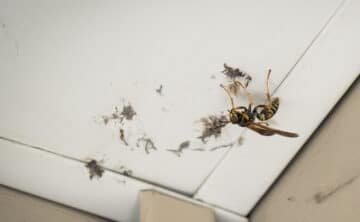
Wasp & Hornet Control
Whether you’re looking for prevention or treatment of existing nests, we can help keep you from getting stung!
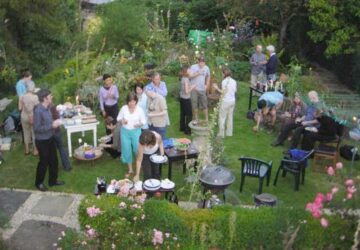
What To Do About Wasps?
What to Do About Wasps in Minnesota It’s hard to keep your cool when yellow jackets or wasps target your summer picnic. Because they are

One-time Services
We offer single-service pest control for the homeowner with a single pest problem–no contract required!



